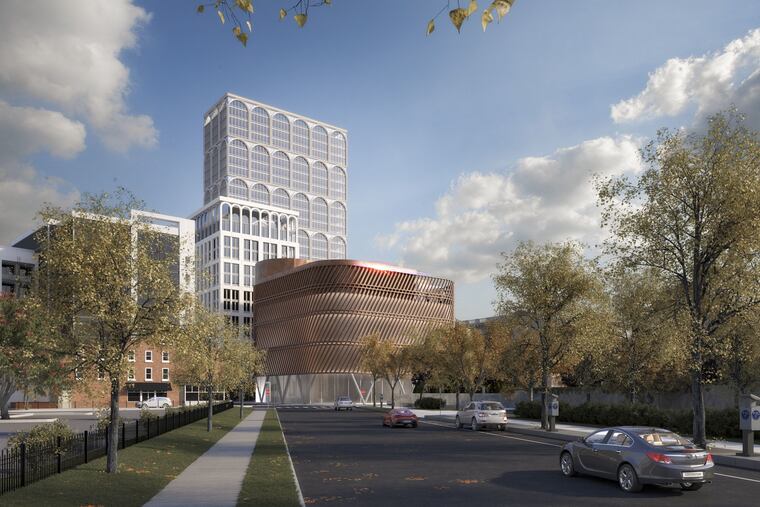Philadelphia has a rich Black history. It deserves a robust African American museum.
A world-class museum on the Ben Franklin Parkway will draw visitors, educate our own people, and celebrate the African American story in our city.

Several months ago, I visited The Legacy Museum in Montgomery, Ala., which focuses on our nation’s history of slavery and African American oppression. There, I saw an exhibit that stopped me in my tracks.
One section of the museum features a set of large glass jars filled with dirt, taken from beneath the bodies of Black people of all ages whose deaths came at the end of rope or a bonfire. Each glass jar carries the name of the victim, the location of the tree, and the date of the lynching, and is displayed on neatly arranged rows and shelves. A shrine to remember them.
Lest anyone think that the story of the trauma exhibited in Montgomery was an exclusively “Southern thing,” one of the earth-filled jars on display bore the name of a Pennsylvania man, Zachariah Walker, who was burned alive in 1911 while thousands of residents of Coatesville in Chester County looked on.
Standing before the jars felt as depressing as visiting the Children’s Memorial in Israel, a powerful tribute to 1.5 million Jewish children murdered during the Holocaust. Both museums are somber places that reflect infinite pain.
The Legacy Museum was a stark reminder that genocide has also taken place in America.
I had to take many deep breaths to process what I saw. According to the museum: Six million Africans captured. Two million lost on the unimaginable journey across the Atlantic. Four million enslaved Africans, brutalized, stripped of identity, marginalized. (The numbers are often said to be much larger.)
As if to provide some visitors with some respite from the anguish, The Legacy Museum includes a Reflection Space, exhibiting 400 photos of distinguished African Americans covering the entire room.
I was struck by how many people with Philadelphia ties were profiled in that room: several members of the James Forten family, Richard Allen, Fanny Jackson Coppin, W.E.B. Du Bois, Sadie Tanner Mossell Alexander, Leon Higginbotham, and Leon Sullivan, Frances Ellen Watkins Harper, Octavius V. Catto, Cecil B. Moore, and others. Sitting there was both soothing and a powerful reminder of the rich contributions to our nation’s history by members of the city’s African American community.
Since my visit, the despair and anger and feelings of disgrace that overwhelmed me at the Legacy Museum have given way to hope that Philadelphia’s proposed new African American Museum, being conceived for the Benjamin Franklin Parkway, could deliver an equally powerful experience. The recent selection of the two developers — National Real Estate Development and Frontier Development & Hospitality — brings both talent and vision to the project.
The new Parkway location elevates this museum, and it will rightfully take its place beside the Barnes, the Franklin Institute, the Academy of Natural Sciences, the Rodin, the Philadelphia Museum of Art, and the new Calder Gardens.
Of course, there is only so much a building can do. Count me a skeptic about the capacity of bricks and mortar museums to draw both visitors and philanthropic support, as history is continuously disrupted by technology.
However, in this moment of history, a new Philadelphia African American Museum is critical — not just for the opportunity to showcase Black excellence, but because of the sustained impacts of racism, exclusion, violence, isolation, and poverty perpetrated across every inch of our city. These were not — and are not — exclusively Southern traditions.
Nor is the new museum’s creation exclusively an African American issue. It’s not lost on me that I’m a white man making this suggestion. But I advocate for this project as a lover of our city, and as someone who believes deeply in the spirit of allyship among Philadelphians of all backgrounds.
As a historian, I’m also committed to the principle that Black history is an essential component of our nation’s collective history — the shameful parts of which cannot be denied, rewritten, or legislated away, no matter how hard some might try.
A world-class museum of Philadelphia African American history and culture will draw new visitors, educate our own people — particularly our children — and celebrate the prominence and priority of the African American story in our city.
Ensuring that the structure is architecturally brilliant, curated to the highest levels of excellence, and prepared to impact guests will require the same level of civic commitment and resources that brought the Barnes Foundation to the city.
Museums are expensive. Twenty million dollars was spent to build The Legacy Museum. Much more will be needed to make Philadelphia’s African American Museum among the nation’s best, a deserving status for the story to be unveiled.
As Philadelphians, we should expect and demand nothing less.
We should expect and demand nothing less.
Content rules, whether on a Netflix series or in a history museum. The storytelling opportunities for the newly expanded and relocated museum here are limitless and — as demonstrated by the Forten Family exhibition at the Museum of the American Revolution — can be informative, entertaining catalysts for drawing visitors.
Philadelphia has a central story to tell in the history of facing oppression. From the story of the largest free Black population in the new nation to the founding of the Free African Society and Mother Bethel African Methodist Episcopal Church, to William Still’s copious records documenting the work of the Underground Railroad, to the fight of Caroline LeCount to integrate the earliest streetcars.
Our new governor and next mayor — together with the philanthropic community — should gather their forces and funding to maximize a successful outcome for the new African American Museum on the Parkway. Making this project a reality is a true legacy opportunity.
Sam Katz is a historical documentary filmmaker and cofounder of the Histories Collaborative of Philadelphia.